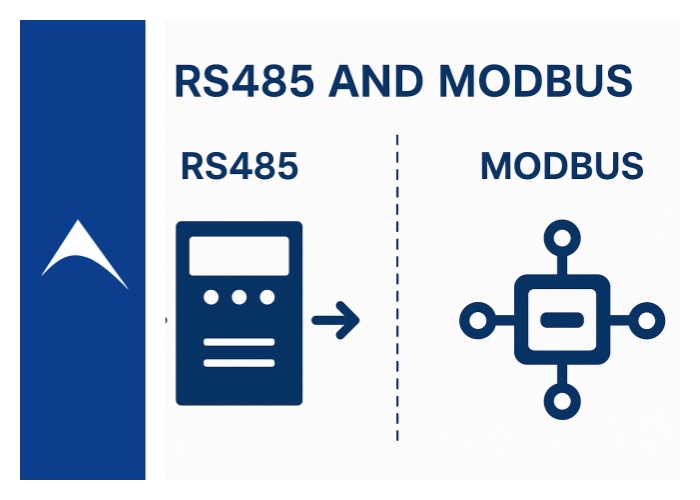
Understanding the Relationship Between RS485 Communication and Modbus Protocol in Industrial Systems
2025-10-29 14:51
In industrial automation, RS485 communication and the Modbus protocol are two of the most widely used technologies for connecting sensors, controllers, and monitoring devices. Although they are often mentioned together, they represent different layers of industrial communication — one defines the physical transmission method, while the other defines the data interaction logic. Understanding their differences and how they cooperate helps engineers design stable and efficient control systems.
RS485 Communication: The Physical Transmission Layer
RS485 communication is a physical layer standard that defines the electrical characteristics of data transmission. Its primary purpose is to ensure that signals are transmitted reliably across long distances and under harsh industrial conditions. It operates through differential signaling using two wires, A and B, where the logical state (1 or 0) is determined by the voltage difference between them. This mechanism greatly enhances noise immunity, making RS485 communication ideal for environments with strong electromagnetic interference, such as factories or power plants.
Another major advantage of RS485 communication is its support for multi-point networks. A single network can host one master and up to 32 slave devices (or more with special chips), all connected on the same bus. This allows sensors, transmitters, and controllers to share the same communication line, reducing wiring costs and simplifying installation. The transmission distance can reach up to 1200 meters, and even longer if the baud rate is lowered. For short distances, data rates of up to 10 Mbps can be achieved, balancing both distance and speed requirements.
Modbus Protocol: The Logic and Data Exchange Rules
The Modbus protocol operates at the application layer. It defines how data is structured, addressed, and exchanged between devices. While RS485 communication provides the physical path for signal transmission, the Modbus protocol governs the meaning of the data being transmitted. It specifies message formats, command structures, and timing sequences, enabling different devices from different manufacturers to communicate seamlessly.
In practice, Modbus protocol uses a master-slave architecture. The master initiates requests, and the slaves respond according to their assigned addresses. Each operation is identified by a function code—for example, function code 03 reads holding registers, while code 06 writes to a single register. These standardized function codes ensure that devices interpret instructions consistently, enhancing interoperability across systems.
Modbus protocol supports multiple data types, including digital signals (on/off states) and analog signals (such as temperature or pressure). It also employs CRC (Cyclic Redundancy Check) to verify data integrity, preventing errors during transmission. There are two primary modes of operation: RTU (Remote Terminal Unit), which uses binary encoding for higher efficiency, and ASCII mode, which uses readable text and is easier for debugging or slower communication needs.
RS485 and Modbus: A Collaborative Framework
When combined, RS485 communication and the Modbus protocol form one of the most reliable and cost-effective solutions for industrial networking — commonly referred to as “Modbus RTU over RS485.” In this configuration, RS485 serves as the physical transport medium, while Modbus defines how devices exchange and interpret data packets. This layered structure allows for efficient, standardized, and robust communication in automation systems.
For example, in a factory production line, temperature and pressure sensors transmit data to a PLC (Programmable Logic Controller) via RS485 communication using the Modbus protocol. The PLC then processes this information and sends control commands to actuators, ensuring real-time process adjustment. In energy management systems, smart meters for electricity, water, and gas use the same setup to report data to a central monitoring platform. The Modbus protocol ensures that these readings are correctly formatted and synchronized for energy analysis and optimization. Similarly, in security systems, cameras, alarms, and access controllers communicate through RS485 wiring, following Modbus commands for remote control and data sharing.
Although RS485 communication and the Modbus protocol are closely related, they serve distinct functions. RS485 defines how data is physically transmitted, while Modbus defines what data means and how it is exchanged. Their combination provides a strong foundation for industrial connectivity — robust, scalable, and widely compatible.
As smart manufacturing and Industrial IoT continue to evolve, the integration of RS485 communication and Modbus protocol with modern technologies such as edge computing and wireless communication will further expand their role, enabling smarter and more flexible industrial systems worldwide.
